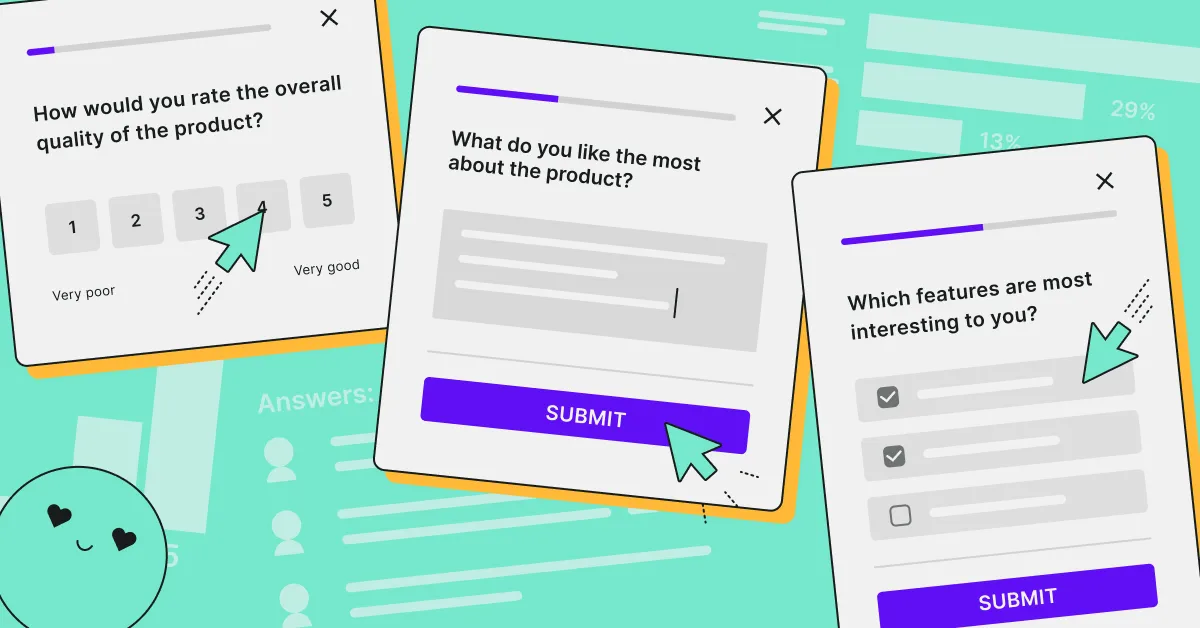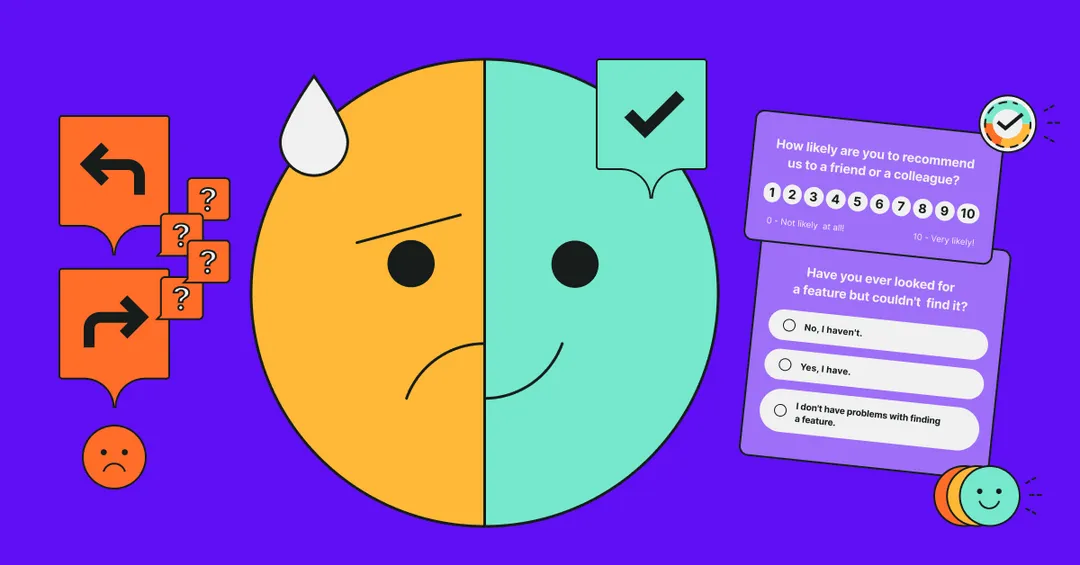As a product designer or developer, your ultimate goal is to create solutions that resonate with users, offering seamless interactions and experiences that not only meet but exceed expectations.
However, to achieve this, you need to shift away from the traditional one-size-fits-all approach and invest in inclusive user design that takes into account diverse perspectives.
In this blog post, we’ll explore the core principles of inclusive user reseach, its significance, and most importantly, how it can revolutionize your product design.

What is inclusive user research?
Inclusive user research refers to the practice of including a diverse range of participants in user research studies. It aims to capture the perspectives and needs of various user demographics such as different races, ethnicities, genders, ages, abilities, and socioeconomic statuses.
When investing in inclusive user research, you go beyond recognizing and accepting diversity and intentionally seek to incorporate it into the research design. As a result, you’ll get more comprehensive and representative insights that will help your design teams create products and services that are genuinely accessible and usable for all.
“It is no longer enough to simply offer a product translated in ten to twenty different languages. Users also want a product that acknowledges their unique cultural characteristics and business practices.”
— Elisa M. del Galdo and Jakob Nielsen, authors of International User Interfaces
Inclusive user research might involve recruiting participants who represent a broad range of physical and cognitive abilities, interviewing users from different cultural or socioeconomic backgrounds, or conducting studies in various geographical locations.
The ultimate goal is to ensure that the products and services designed based on this research can meet the needs of as many potential users as possible, rather than catering to a narrow demographic.
One of the most effective ways to conduct inclusive research is by using user surveys. We’ll discuss this in more detail further down.
Why does inclusion matter in user research?
Inclusive design is about respecting and valuing the diversity of human experiences and abilities, which leads to better, more inclusive designs that work for everyone.
Representation
By ensuring a broad variety of users are included in UX research, you can capture a more accurate representation of how different people will interact with and perceive your product or service. This allows you to design products that work well for a diverse group of people, not just a limited user base.
Accessibility
Inclusive user research places a strong emphasis on accessibility. By including individuals with diverse abilities, for example, we can better understand the barriers they face and design solutions that are easy for everyone to use, thereby creating products that are more accessible and usable.
Innovation
Including a diverse range of perspectives can lead to more creative problem-solving and innovative design solutions. Different people bring different experiences and ways of thinking to the table, which can inspire new ideas and challenge assumptions.
Business value
Inclusion can also have significant business benefits. When products are designed to be usable by a wide range of people, they reach a larger market, which can lead to increased loyalty, customer satisfaction, and ultimately, business growth.
Ethical responsibility
Beyond the multiple practical benefits, inclusion in UX research is also a matter of fairness and equity. Everyone, regardless of their background or abilities, should be able to use and benefit from the products and services that shape our world.
Remote vs. in-person user research: factors to consider in the context of inclusivity
Both remote and in-person methods can have their benefits and drawbacks in the context of inclusive user research. Choosing between them depends on several factors, including the goals of the study, the characteristics of your target user base, logistical constraints, and the nature of the interactions you need to observe or facilitate.
Remote user research
Remote user research, whether synchronous (occurring in real-time, like video calls) or asynchronous (participants complete tasks in their own time), offers several benefits if you want to make sure you understand a diverse range of user needs.
- Remote research allows you to include participants from different locations. This geographic diversity can be crucial in understanding cultural nuances or regional differences in user behaviors, perceptions, and needs.
- It can be more accessible for people with physical disabilities, older adults, or others who might find it challenging to travel to a specific location for an in-person study. Certain remote user research methods, such as surveys, do not require any previous knowledge or experience on the part of the respondents, helping you collect insights from a wide range of users.
For instance, the standardized Net Promoter Score (NPS) is one of the most universally recognized surveys:
- Conducting research remotely allows you to observe users in their natural environment. The comfort of familiar surroundings can lead to more authentic behaviors and responses.
- Some participants may feel more comfortable and open when they're not physically in the same space as the researcher or when they can remain anonymous, especially when discussing sensitive topics.
However, this method can also come with challenges. It might exclude participants who lack a stable internet connection or the necessary technology, such as those from lower socioeconomic backgrounds or rural areas. Plus, remote methods might miss out on non-verbal cues or contextual details that are easier to pick up in person.
In-person user research
In-person user research methods, such as interviews, focus groups, or usability testing, also have their strengths when you’re looking to collect insights from a diverse user base.
- In-person research can provide richer qualitative data. You can observe body language, facial expressions, and other non-verbal cues. It's also easier to probe responses or ask follow-up questions on the spot.
- You can control the environment and minimize potential disruptions, leading to more consistent data. This can be particularly useful for usability testing where you need to monitor specific tasks.
- Building rapport can be quicker in person, and some participants may feel more engaged in the research process.
Yet, in-person research might not always be the most inclusive approach. It may exclude participants who can't travel due to physical disabilities, care responsibilities, or lack of time. Also, it limits the geographical diversity of participants.
Often, a mixed-method approach combining both remote and in-person techniques can provide a comprehensive and inclusive understanding of user experiences.
How to use surveys in inclusive user research
User surveys can be incredibly useful in inclusive user research. Their broad reach and scalability make them an excellent tool for collecting data from a diverse array of users with different levels of digital literacy.
However, to ensure that surveys truly foster inclusivity, there are certain factors you should consider.
Accessible design
Your online surveys should be easily accessible to all potential respondents, regardless of their digital skills. This includes designing for different devices and screen sizes, ensuring that the survey can be easily filled out whether the respondent is using a desktop computer, a smartphone, or a tablet.
Using a dedicated survey tool can help you overcome this challenge. Survicate, for instance, provides dozens templates for any stage of the user journey, on any channel, including email, link, website, in-product and mobile app.
Inclusive language
Avoid using technical jargon, acronyms without clear explanations, or culturally specific idioms that might not be universally understood. In addition, be mindful of using gender-neutral language and terms that are inclusive of all races, ethnicities, and backgrounds. With certain survey tools, such as Survicate, can also use automatic translations to display the survey in multiple languages.
Multiple response formats
By offering a variety of response formats—such as open-ended text responses, multiple-choice questions, or Likert scale questions—you can make the survey more engaging for all types of respondents.
With Survicate, you can fully customize your surveys by adding different question types, such as in the product feature matrix template below:
Diverse recruitment
When distributing your survey, aim to reach as diverse a group of respondents as possible. This could involve promoting your survey in different communities, networks, and channels.
Survey testing
Before distributing your survey, it's a good idea to test it with a small, diverse group of users. This can help you identify any potential issues or barriers to inclusivity that you might have overlooked in the design and development process.
Inclusive design and accessibility
Accessibility, often seen as a subset of inclusive design, specifically focuses on designing products, services, and environments that are usable by people with disabilities. This encompasses a wide range of conditions, including visual, auditory, motor, cognitive, and speech impairments.
Web accessibility, for instance, follows specific guidelines such as the Web Content Accessibility Guidelines (WCAG) to ensure that digital content is accessible to all users.
This might involve providing alternative text for images (for visually impaired users), captions or transcripts for audio content (for hearing-impaired users), or ensuring that a website can be fully navigated using a keyboard (for users with motor impairments).
However, accessible design doesn’t only benefit users with disabilities. Consider something like captions for videos. While they were initially designed for the deaf or hard of hearing, they are also incredibly useful in noisy environments or for people who prefer to watch videos without sound.
Inclusive design and accessibility: a synergistic duo
Inclusive design and accessibility, when executed together, make a potent combination. Here are some strategies to integrate inclusive design and accessibility into your work.
Understand your users
Gather data about your users—both quantitative and qualitative—to gain a comprehensive understanding of their needs, preferences, and the challenges they face. User research should encompass a broad spectrum of your user base.
Apply accessibility guidelines
Leverage established accessibility guidelines, such as the WCAG for digital products. These provide a practical roadmap for making your designs more accessible.
Cultivate empathy
Foster an empathetic mindset within your team. Empathy helps designers move beyond their biases and assumptions and view the world from the users' perspective.
Embrace diversity within your team
Lastly, advocate for diversity within your design team. Diverse teams bring diverse perspectives, leading to designs that reflect a broader range of human experiences.

Enhance your user research with surveys
Inclusive user research empowers you to design with empathy and curiosity, keeping users at the heart of the design process.
Thanks to their ease of use and versatility, surveys play a pivotal role in collecting insights from a diverse user base. Survicate, with its user-friendly interface and comprehensive features, offers an ideal platform to conduct inclusive user research.
The ability to support various question types - from multiple-choice to open-ended - allows you to capture a wide range of user responses. What’s more, it can be deployed on any channel and at any stage of the user journey. To get started, simply sign up for a 10-day free trial and start designing for all.













.webp)
.webp)


